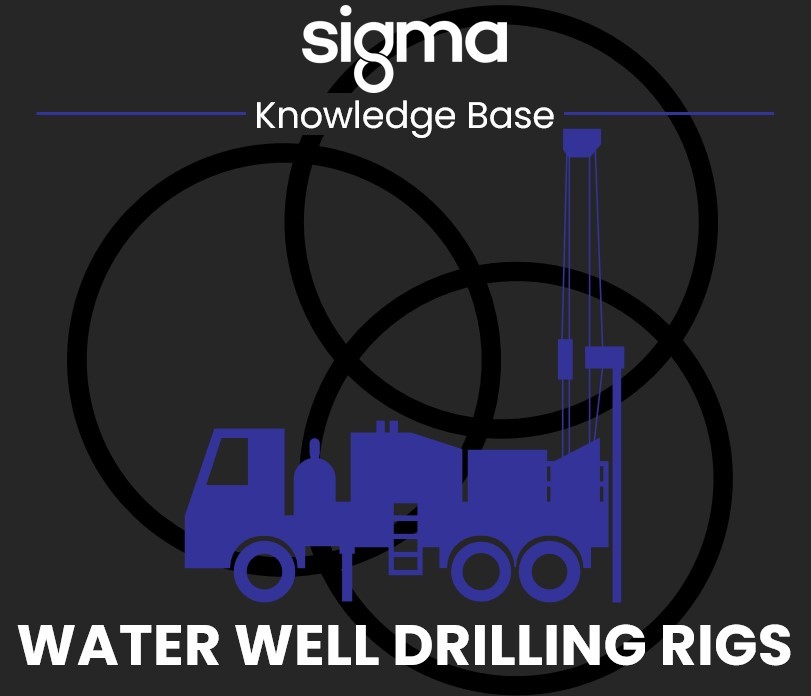
Introduction:
In a world where access to clean and reliable water is essential, the role of water well drilling rigs takes center stage. These powerful machines are the unsung heroes behind the scenes, enabling communities to tap into underground water sources and ensuring a sustainable water supply. In this blog, we'll delve into the fascinating world of water well drilling rigs, exploring their types, functionalities, and the crucial role they play in providing a lifeline to countless communities worldwide.
Types of Water Well Drilling Rigs:
Water well drilling rigs come in various types, each designed to cater to specific geological conditions and water requirements. The primary types include:
- Rotary Drilling Rigs - These rigs use a rotating drill bit to cut through the earth and rock formations, allowing for efficient drilling in a variety of soil types. Rotary drilling rigs are versatile and widely used for both shallow and deep wells.
- Cable Tool Drilling Rigs - Also known as percussion drilling rigs, these machines use a weighted cable to repeatedly raise and drop a drill bit, breaking the rock and soil. While slower than rotary drilling, cable tool rigs are effective in hard formations.
- Auger Drilling Rigs - Auger rigs are suitable for softer formations, utilizing a helical screw to extract soil and rock. They are commonly used for shallow wells, environmental sampling, and geotechnical investigations.
Key Components and Functions:
Water well drilling rigs are complex machines with various components working in unison to achieve successful well construction. Some key components and their functions include:
- Drill Bit - The cutting tool at the end of the drill string that breaks through rock and soil.
- Drill Pipe - Hollow tubes that transmit drilling fluid and allow for the insertion of the drill bit.
- Mud Pump - Essential for rotary drilling, mud pumps circulate drilling fluid to cool the drill bit, carry cuttings to the surface, and provide stability to the wellbore.
- Derrick - A towering structure that supports the drilling equipment and allows for the raising and lowering of the drill string.
- Winch A mechanism used in cable tool drilling rigs to raise and drop the drill bit.
The Role of Water Well Drilling Rigs in Water Supply:
Water well drilling rigs play a vital role in addressing water scarcity by tapping into underground aquifers and other water-bearing formations. Some key benefits include:
- Access to Clean Water - Drilling rigs enable the extraction of clean and uncontaminated water, reducing reliance on surface water sources that may be polluted.
- Reliability - Wells drilled by water well drilling rigs provide a consistent and reliable water supply, especially in regions where surface water availability fluctuates.
- Community Development - Access to clean water enhances community health, agricultural productivity, and overall economic development.
Challenges and Innovations:
Despite their importance, water well drilling rigs face challenges such as high energy consumption, environmental impact, and the need for skilled operators. However, ongoing innovations, including the development of more energy-efficient rigs, advanced drilling technologies, and remote monitoring systems, are addressing these challenges and improving the efficiency of well drilling processes.
Conclusion:
Water well drilling rigs are indispensable tools in the quest for a sustainable and secure water supply. As technology continues to advance, these machines will play a crucial role in addressing global water challenges, ensuring that communities around the world have access to this precious resource for generations to come.
Contact us with any enquiries!
T: +44 (0) 1642 206100
E: sales@sigmaplantfinder.com
Disclaimer: This blog post contains content generated by an artificial intelligence (AI) model. While we have made efforts to ensure the accuracy and quality of the information provided, it is important to note that AI-generated content may not always be error-free or fully aligned with current standards, regulations, or the latest research. We recommend using this information as a starting point for your research and analysis, but we strongly encourage you to verify the facts, consult experts, and cross-reference the content with trusted sources before making any decisions or drawing conclusions based on the information presented in this blog post. The views and opinions expressed in this content are not necessarily those of the blog's author or publisher, and we cannot be held responsible for any consequences that may arise from its use.
